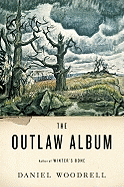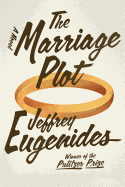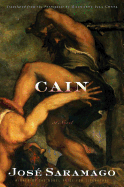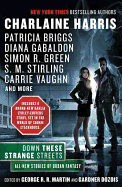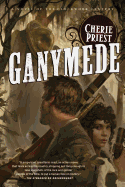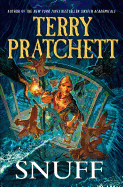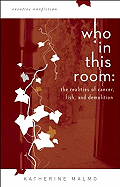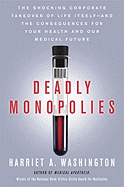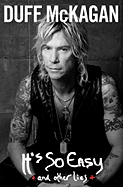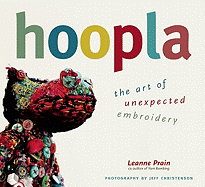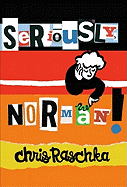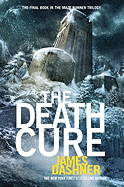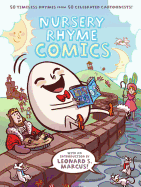Her 2003 debut, Serious Girls, put Maxine Swann on the literary map as a serious novelist; author Mary Gordon called it "a small masterpiece." The story of two teenagers, Maya and Roe, who are trying to live "interesting lives," the book details their odysseys toward identity, but remembers something that too many writers forget when creating young female characters: women of any age, just like men, are interested in power and learning how to wield whatever amount of it that they have.
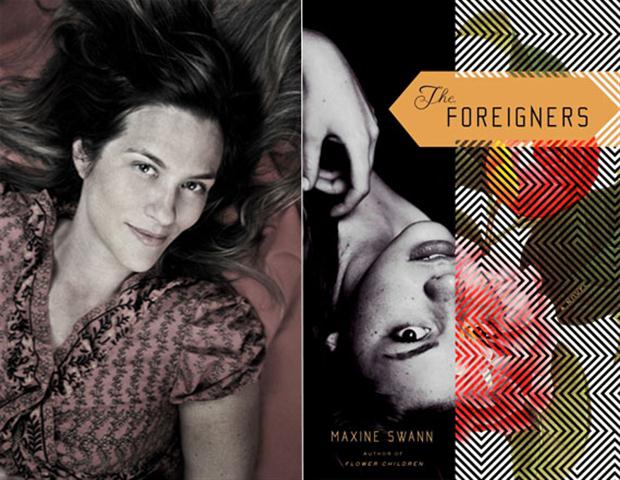 Take Maya and Roe, add a decade or so, and you have the characters of Swann's latest novel, The Foreigners (Riverhead Books). That is not to say she's writing about the same characters, or even similar ones--rather, that the three women in this book are exploring their own power, too. Daisy, a recently divorced American, and Isolde, a socially ambitious European, meet up with Argentine Leonarda while living in Buenos Aires.
Take Maya and Roe, add a decade or so, and you have the characters of Swann's latest novel, The Foreigners (Riverhead Books). That is not to say she's writing about the same characters, or even similar ones--rather, that the three women in this book are exploring their own power, too. Daisy, a recently divorced American, and Isolde, a socially ambitious European, meet up with Argentine Leonarda while living in Buenos Aires.
That city is one Swann happens to know well, since she's lived in Argentina since 2003. "I've had quite a few expatriate experiences," she said, speaking by phone from her apartment in Buenos Aires. "When I was 21, I went to Paris and fell in love with an Argentinean man. I stayed eight years, then spent a year in Pakistan and two back in the U.S. before returning to Argentina. My relationship has since ended, but I stayed behind."
Swann said this is the first book she's written about those experiences. "I am so moved and fascinated and excited by Buenos Aires," Swann continued. "As I began writing, it was through the eyes of a foreigner, and that fascinates me. I wanted to keep exploring how being in a different place and figuring it out goes hand in hand with self-discovery. While you're exploring a city, you discover different sides of yourself. You might decide to become someone different, or you might just find that a certain aspect of your personality flourishes in this new place."
Her two expatriate characters, Daisy and Isolde, find that true when they reach the South American city, with its entirely distinct atmosphere. "Isolde realizes she's always yearned to be aristocratic and upper-class and in the art world. Those are things she can never be, or even try to be, at home. Meanwhile, Daisy becomes obsessed with Leonarda and does things she would never have dared to do on her own home turf.
Swann herself knows what it is to try on identities, starting with her undergraduate semester abroad in Paris (she has a master's from Columbia in French literature, her thesis written on Proust's Remembrance of Things Past). "Paris, however--it's a city so trodden by literature. It's been written about so much, it's just about finished.
"Buenos Aires has more space, space for things to happen. I definitely responded to this city more and found that I really wanted to write about it in a way that I never wanted to about Paris, or even France. You don't feel like history is embalmed here."
Swann explained that she does feel the history in Buenos Aires, but "it's been scribbled over with graffiti. The scrappiness to contemporary life here doesn't destroy history, but seems to make it more modern, more contemporary. There's a real sense of temporality and renewal. I arrived in 2002, right after the big economic crash here and I thought it was pretty dramatic and devastating, but the people I met all said oh, c'mon, we're used to this—it happens every eight years!"
The author played with Daisy's voice, making it "much less restrictive than I've used previously," allowing her to show off the initial freedom of expatriate life, then its pitfalls. "The sense of isolation also holds the sense of freedom and rejuvenation," Swann said. "I have to say I really enjoyed writing against the women's fiction grain and really letting my characters be complex, sometimes even unpleasant. Some people say that if all the world's leaders were women we would have no war. I don't buy that at all!"
Since Swann likes complicated characters and different settings, it makes sense that one of her great influences is Nicole Krauss, whose most recent novel, Great House, was also set in Argentina. "Krauss is an American who actually writes about the wider world. If you think about that, you'll realize it isn't that common. My other strongest influence from American literature would be Henry James. I like how he takes complex women and places them in cross-cultural situations through which their personalities and histories are revealed."
Now that she has begun to write about Americans abroad, Swann plans to continue. She wants to write a novel based on the journals she kept during her year in Pakistan. "It will be set in 1998, pre-9/11, but the reader will understand that the mashing together of East and West is already in progress. It's very exciting to be working on it. I'd also like to write about Estonia; my brother lived there and I've spent time with him in that country and made friends with whom I keep in touch." --Bethanne Patrick
Portrait of the Artist: Maxine Swann
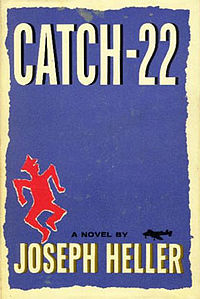 Joseph Heller's brilliant satirical war novel Catch-22 is 50 years old this week, yet seems remarkably young, fit and sharp-tongued for its age. I don't re-read many books, but I've gone back to this one often over the years. It always helps me understand the way the world works. And it's funny as hell... literally.
Joseph Heller's brilliant satirical war novel Catch-22 is 50 years old this week, yet seems remarkably young, fit and sharp-tongued for its age. I don't re-read many books, but I've gone back to this one often over the years. It always helps me understand the way the world works. And it's funny as hell... literally.


 Take Maya and Roe, add a decade or so, and you have the characters of Swann's latest novel, The Foreigners (Riverhead Books). That is not to say she's writing about the same characters, or even similar ones--rather, that the three women in this book are exploring their own power, too. Daisy, a recently divorced American, and Isolde, a socially ambitious European, meet up with Argentine Leonarda while living in Buenos Aires.
Take Maya and Roe, add a decade or so, and you have the characters of Swann's latest novel, The Foreigners (Riverhead Books). That is not to say she's writing about the same characters, or even similar ones--rather, that the three women in this book are exploring their own power, too. Daisy, a recently divorced American, and Isolde, a socially ambitious European, meet up with Argentine Leonarda while living in Buenos Aires.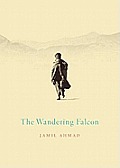 The easiest Further Reading angle for The Wandering Falcon (Riverhead) by Jamil Ahmad would be to gather authors who published their first works at an advanced age. Ahmed, who began writing these collected stories more than 40 years ago, is nearly 80 now, celebrating the release of his book in the United States (it came out in the U.K. earlier this year after its initial publication by Penguin India).
The easiest Further Reading angle for The Wandering Falcon (Riverhead) by Jamil Ahmad would be to gather authors who published their first works at an advanced age. Ahmed, who began writing these collected stories more than 40 years ago, is nearly 80 now, celebrating the release of his book in the United States (it came out in the U.K. earlier this year after its initial publication by Penguin India).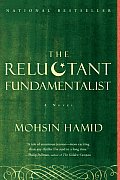 Pakistani protagonist Changez of The Reluctant Fundamentalist by Mohsin Hamid is no tribal separatist--at least at first. In this haunting novel, told entirely in monologue by Changez, the Princeton-educated former Wall Street shark sits in a café in Lahore and carefully explains to an unseen American why his views have radically changed. It's an electrifyingly different perspective on the post-9/11 world.
Pakistani protagonist Changez of The Reluctant Fundamentalist by Mohsin Hamid is no tribal separatist--at least at first. In this haunting novel, told entirely in monologue by Changez, the Princeton-educated former Wall Street shark sits in a café in Lahore and carefully explains to an unseen American why his views have radically changed. It's an electrifyingly different perspective on the post-9/11 world.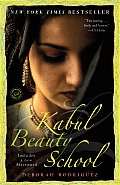 Kabul Beauty School: An American Woman Goes Behind the Veil by Deborah Rodriguez and Kristin Ohlson is the story of how Rodriguez went to Afghanistan to provide medical aid and found that her hairdressing skills were not only more in demand, but also healing in their way. The first chapter is a must read, but even when the cosmetic problems to be solved are not quite so arresting, the author's real affection for the women she helped shines through.
Kabul Beauty School: An American Woman Goes Behind the Veil by Deborah Rodriguez and Kristin Ohlson is the story of how Rodriguez went to Afghanistan to provide medical aid and found that her hairdressing skills were not only more in demand, but also healing in their way. The first chapter is a must read, but even when the cosmetic problems to be solved are not quite so arresting, the author's real affection for the women she helped shines through.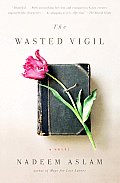 An Englishman, his Afghan family, a Russian woman and an American CIA operative walk into a bar...okay, we're kidding, but those really are the characters in Nadeem Aslam's taut novel The Wasted Vigil, which throws together those characters--each of whose backgrounds has at one time or the same affected Afghanistan--and builds tension to demonstrate that no one group or event can be wholly blamed for the present situation there. --
An Englishman, his Afghan family, a Russian woman and an American CIA operative walk into a bar...okay, we're kidding, but those really are the characters in Nadeem Aslam's taut novel The Wasted Vigil, which throws together those characters--each of whose backgrounds has at one time or the same affected Afghanistan--and builds tension to demonstrate that no one group or event can be wholly blamed for the present situation there. --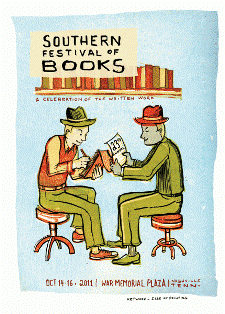 The 23rd annual
The 23rd annual 